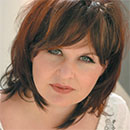Entertainment
/ArcaMax
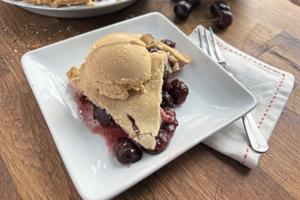
Gretchen's table: 2 cherry dishes for Presidents' Day
Presidents often are larger than life, but outside the Executive Mansion, they're regular people like you and me, only with more restrictions.
Which might lead you to wonder what they eat when they're just hanging out with friends or family. We all know Donald Trump, for instance, loved his Diet Cokes and well-done steaks drowned in ketchup. No...Read more
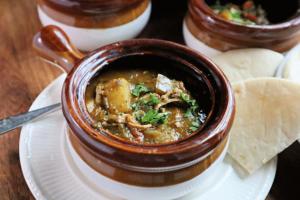
Gretchen's table: Hatch chile pork stew will spice up your Super Bowl party
PITTSBURGH -- Football watch party spreads are often built around nachos, chicken wings and, in Pittsburgh, big bowls of hot Buffalo chicken dip made with Frank's RedHot, Philadelphia cream cheese and ranch or blue cheese dressing. Which is fine, because people like what they like, and who are we to argue with beloved culinary traditions on ...Read more

Throw a President’s Day party
With February just around the corner, stores have already wiped the winter holiday decor from the shelves, swiftly filling them with heart-shaped everything for Valentine's Day. But this oft love-it-or-hate-it holiday isn’t the only occasion to celebrate in February. President’s Day, just days after Valentine’s Day presents an alternative ...Read more
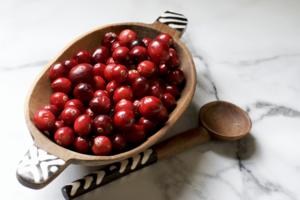
Make-ahead cranberry coffee cake a Christmas morning winner
At our house, and I know we're not alone, Christmas morning goes by in a flash with shredded wrapping paper and bows flying everywhere. And once the gift-giving excitement is over, everyone is hungry and ready for a festive breakfast.
Timing is everything, though. If you start making breakfast at this point, the hangries (where hungry meets ...Read more

5 appetizer recipes for your New Year's party
For years, our family's New Year's Eve tradition included movies, sparkling grape juice and a spread of appetizers that provided the fuel we needed to last until the Times Square Ball dropped at midnight.
Sometimes the menu included familiar favorites saved for special occasions, like nachos, pigs in a blanket or pizza rolls. Other times we'd ...Read more
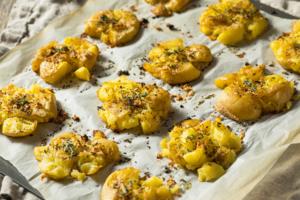
Fact: Smashed potatoes are better than mashed potatoes
What can be better than mashed potatoes, swirls of butter melting down their sides? Smashed potatoes, which reign triumphant in this kitchen. Here, you get more of the potato — the skin and bumps — and all the potato flavor. When finished in the oven, smashed potatoes emerge crusty and browned, closer to roasted or fried potatoes, yet creamy...Read more
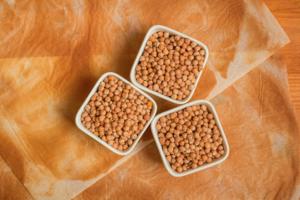
Chickpeas are the base for this bold, warming stew
Lablabi, a Tunisian chickpea soup, is so warming and satisfying, I could eat it every day. During this hectic, bitter cold season, I often do.
It's classic comfort food with plenty of personality, thanks to the addition of harissa. This North African chile paste packs a punch right out of the jar. The soup also gets a boost from tangy lemon.
...Read more
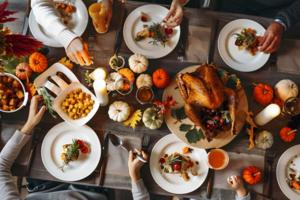
In the Home: Tips and tricks to hosting family for the holidays
As it nears Thanksgiving, Christmas, Hanukkah and other winter holidays, families are preparing to gather. If you’re the host family for this year, having dozens of people in your house may seem daunting. Cooking for your entire family, making sure everyone has a good time and cleaning up after can be overwhelming and tiring.
It’s hard to ...Read more
Looking for an easy holiday nosh? Try these 5 appetizers
Holidays gatherings are among the best of the year. But because there's often so much other stuff going on at the same time — say, last minute Christmas shopping or kids home from school and suddenly underfoot — it can be a challenge to throw a party together and still feel sane.
One solution, of course, is to ask for help. The other is to ...Read more
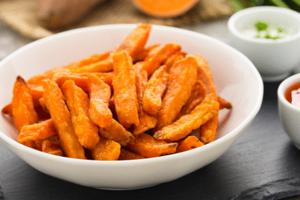
The best way to enjoy sweet potatoes? Make oven fries
First off, sweet potatoes are not yams. Yams hail from Africa, are not sweet or very nutritious. Our growers created this confusion to differentiate the drier, firmer sweet potatoes from the moister varieties they promote during the holidays.
Second, sweet potatoes are for more than Thanksgiving. These members of the Morning Glory family are ...Read more

